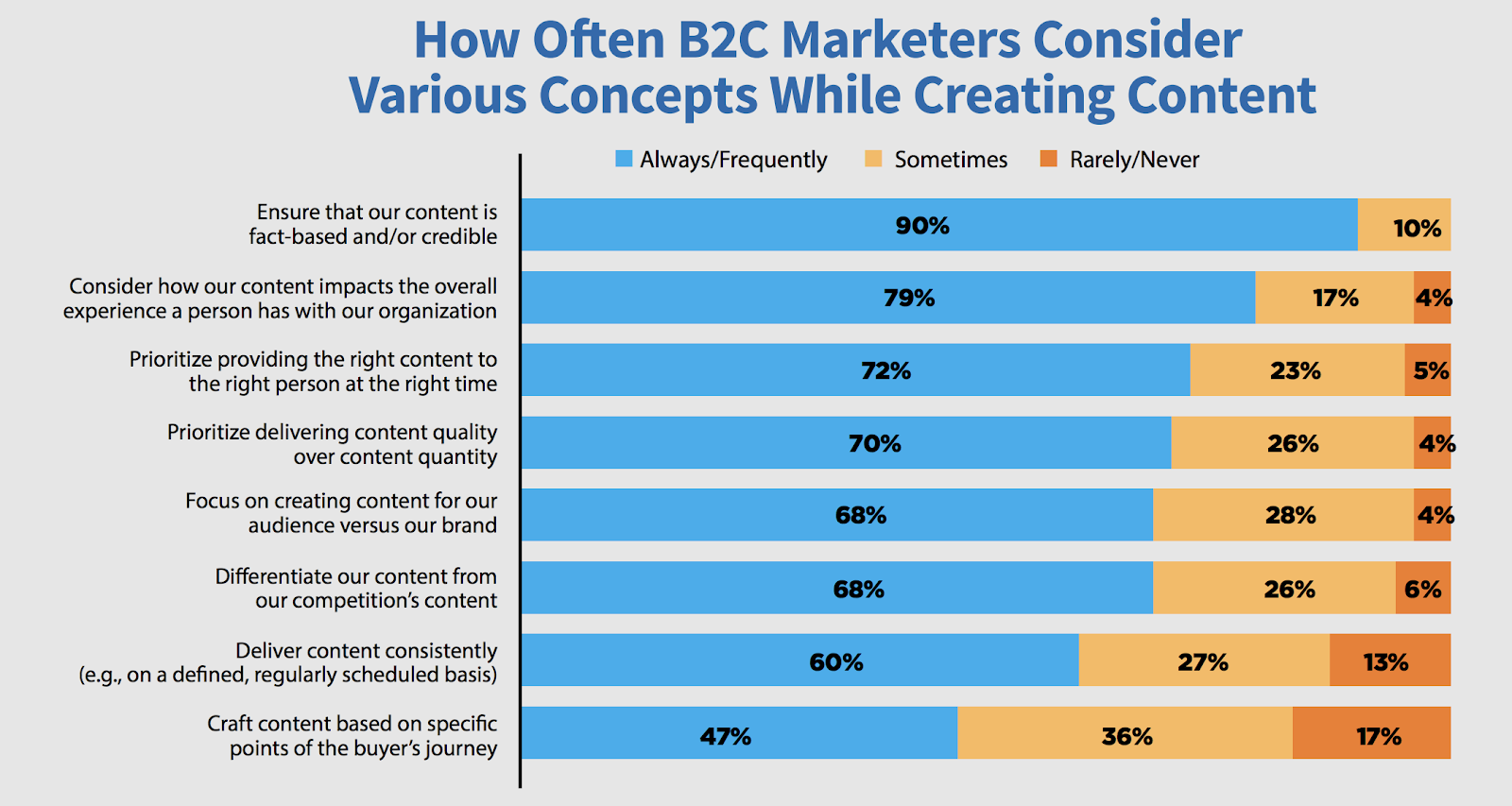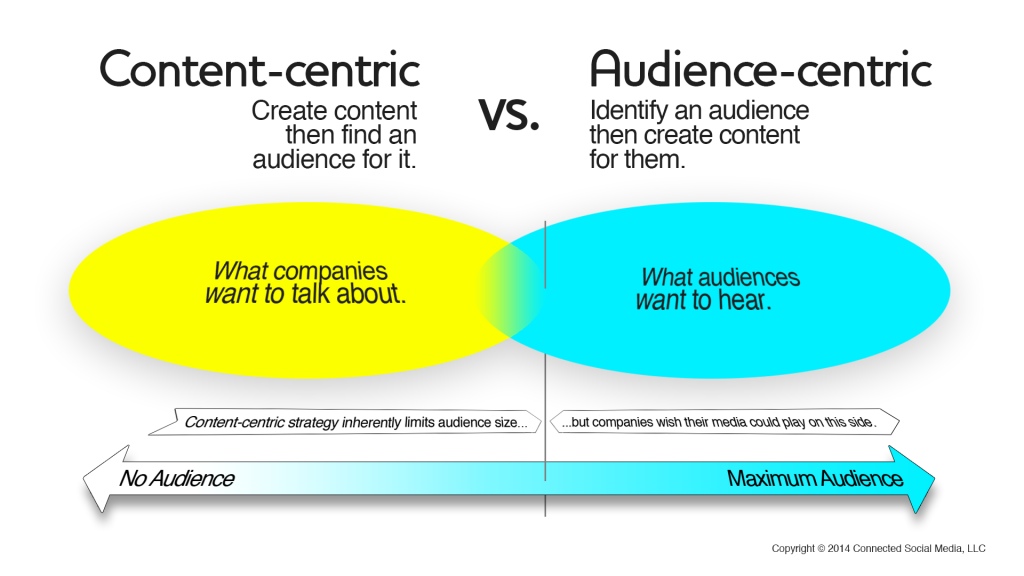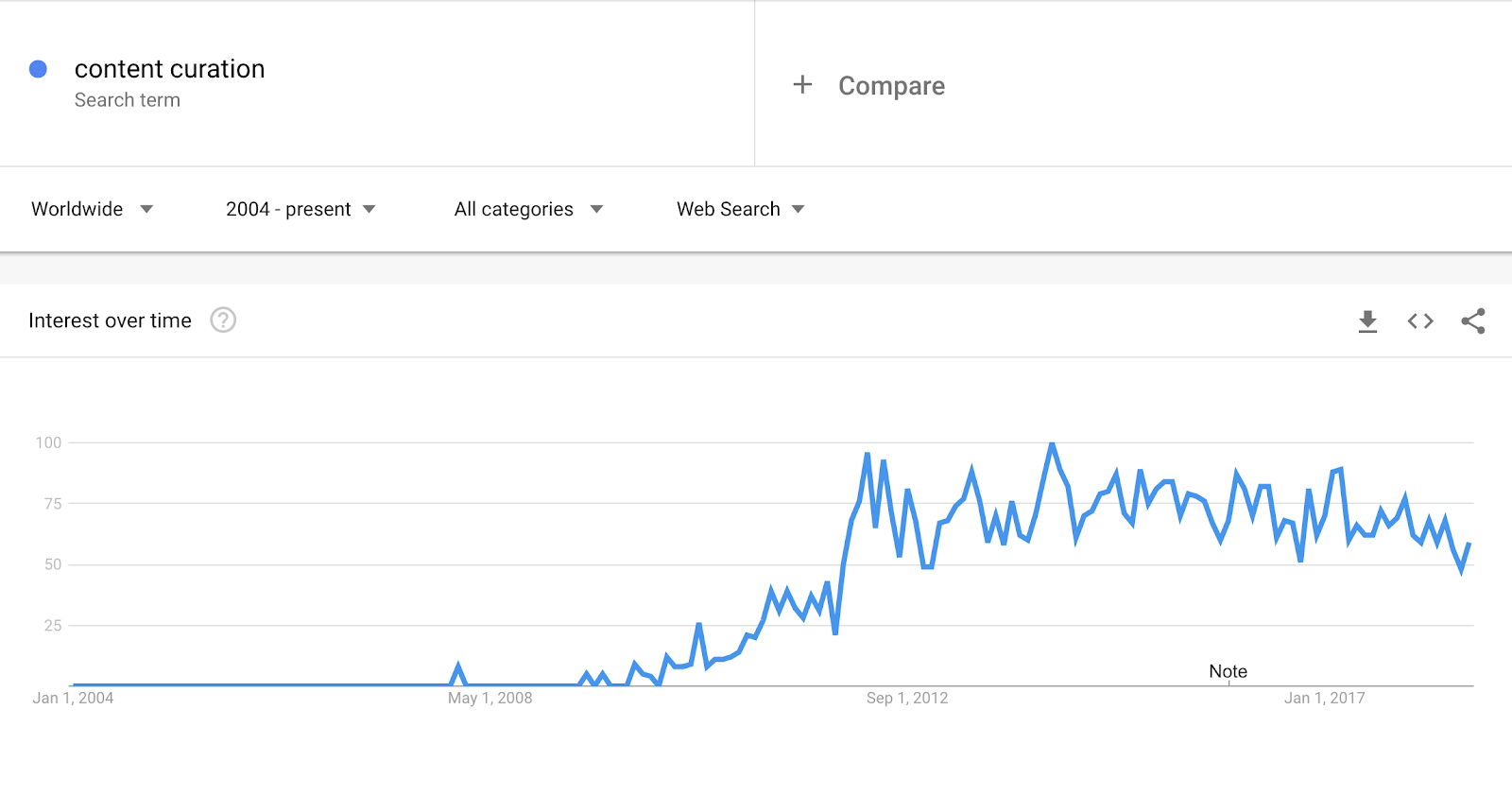 “We’re doing content marketing to rank in search and attract more leads.”
“We’re doing content marketing to rank in search and attract more leads.”
How many times have you heard someone say this, or even thought that to yourself? While no one can deny the advantages content marketing brings, the statement above is driven by what content marketing does for the company, not for the consumer.
Now that content marketing is widely implemented across organizations—91% of B2B and 86% of B2C companies have implemented it—we often forget no one goes online to consume content or become a lead. Instead, people go online to be educated, entertained, or inspired.
Because of this imbalance in the way companies and consumers see their ultimate goals, organizations fall into the trap of talking about themselves. If we go back to the essential stages of the customer’s journey, we know that the consumer doesn’t care about the brand in the awareness stage. All they want is to explore the symptoms they are facing and find the name of their problem so they can solve it.
The 2018 Edelman Trust Barometer report reveals a decline of trust in platforms and media, including social and search. However, voices of expertise are regaining credibility, including technical experts, analysts, CEOs and entrepreneurs.
We’ll dive into what this means for content marketing and how non-narcissistic approach can move your organization forward.
Content marketing is about the needs of your audience
Let’s look at the first sentence of this article again. A marketer’s goal is to grow organic presence and drive revenue for the business, but the real goal is the one their audience has.
Majority of all online sessions—93% to be exact—begin with a search engine. Your audience needs answers and solutions to their problems. As much as 60% of US web users perform at least one search query a week to look for those answers.
Brands create content of various formats to maximize their chances of being the shown and preferred result. And even though they spend 25%-43% of their marketing budget on content, only 23% of CMOs feel they are producing the right information for the right audience, and delivering it at the right time and correct format.
This makes their jobs difficult. They keep spending their resources to create content they aren’t sure is working, despite 63% of them having a buyer persona in mind above all else.
Here’s a caveat: is it possible your audience doesn’t need more of your content, but instead less content that is handpicked for them from the most trustworthy resources possible?
In 2014, Mark Schaefer developed a term that turned the marketing world upside down: content shock. Content shock is represented by the exponentially increasing volumes of content that go beyond the limited human capacity to consume it. If you’re among the 63% of those creating content for their persona, are you confident your audience has the time to consume it?
According to an article by Stephen Walsh, a typical knowledge worker spends about 9.5 hours per week hunting around for information before finding what they need. Their needs cost them a quarter of their working hours.
Is producing more content truly the best way to fulfil these needs?
Content marketing is too self-centered
Another challenge is the fact that a large portion of this content is brand-focused. According to the 2018 B2C research from Content Marketing Institute, about a third of B2C marketers don’t focus on creating content for their audience versus their brand:

Add that to the fact that about 40% of them struggle with publishing content on a defined, regularly scheduled basis, and you end up with content that isn’t just brand-driven, but also unreliable from a consistency point of view.
Another downfall of the brand-first approach is the limit of audience an organization can reach. The further a brand is from audience-centric content, the less impact it has. Creating content that the company wants to talk about means they have to seek an audience for it afterwards:

On the other hand, if they present content that audiences already want to hear, the potential to reach this audience is inherently bigger.
Content curation is a powerful answer
Consistency, topic brainstorm, execution, and proving ROI are among the top requirements and challenges a marketer faces. So when you add the requirement to focus on others and not on the brand itself, it gets even more demanding.
The solution: content curation.
Content curation is certainly not new. It rose to its fame and remained an important part of the content marketing narrative back in 2012:

However, most marketers and organizations know of content curation as simply the practice of sharing other people’s content on social networks. While this is true, it’s only one of the four key parts of content curation, along with curated blog posts, content hubs, and email newsletters.
There are also some widely known content curation benefits, such as improved engagement, lead nurturing, increased conversions, and SEO advantages.
Looking at the earlier mentioned awareness stage of the customer’s journey, education is another often overlooked benefit of content curation. According to survey data from Conductor, if the customer’s journey down the sales funnel begins with educational content, they are 131% more likely to buy.
This brings us to some less obvious strengths of content curation:
It educates readers without pushing your own product. Content curation helps you introduce other trusted voices and opinions without compromising on quality and value to the reader.
It helps you learn which topics your readers are most interested in. Even if you know your persona well, your analytics will tell you exactly what topics and formats don’t work, and which ones you should include more of—without having to risk and create anything on your own.
It drives daily and weekly consistency. Most marketing teams don’t have the capacity to produce content daily. Weekly frequency is easier to achieve, but it still presents a challenge of keeping the quality up. Curated content makes it easy to deliver the best content every time.
It helps you to become more findable as a go-to spot and resource on a particular topic. When you help your audience find the best industry content through you, you become a connector and someone they will likely come back to.
You will develop your brand as a credible source on a particular topic by adding insight to curated content. Instead of just forwarding others’ content, you can increase its value and shape the narrative by adding your thoughts and learnings on the topic.
You will become known by influential members of your industry or topic area. When you become the central place on a specific topic and your reach keeps on increasing, other well-known experts will connect with you and ultimately create a ripple effect.
Become the central place for your audience
Content curation is not just about selecting and displaying information. It is driven by identifying the most relevant information for a hyper-defined persona and contextualizing and organizing this knowledge before presenting it to them.
With content curation, you can leverage the impact of educational content by acting as a journalist that represents multiple sources, sides, and stories. This way, you will provide the consumer with a 360-degree view of the topic and make them fully informed.
In turn, you will become the industry resource that’s just too good to pass up.
Photo by Kristina Flour on Unsplash
